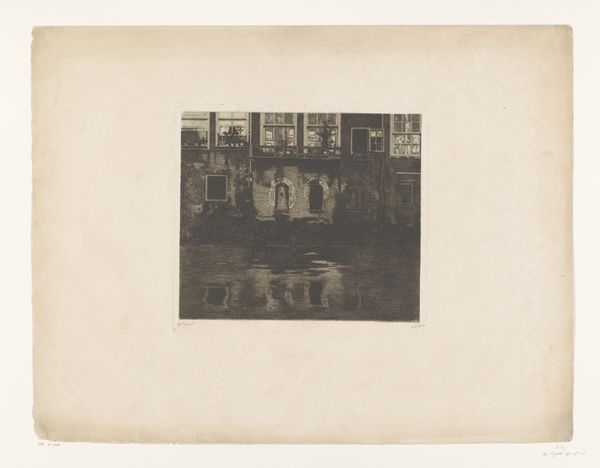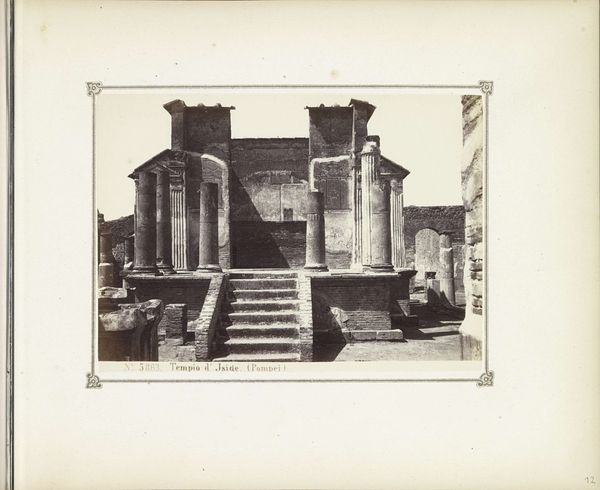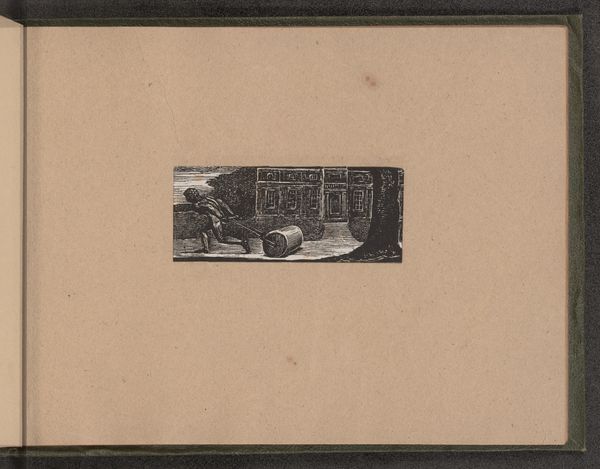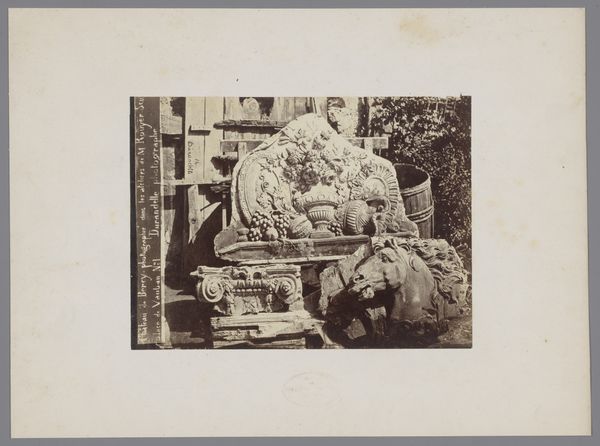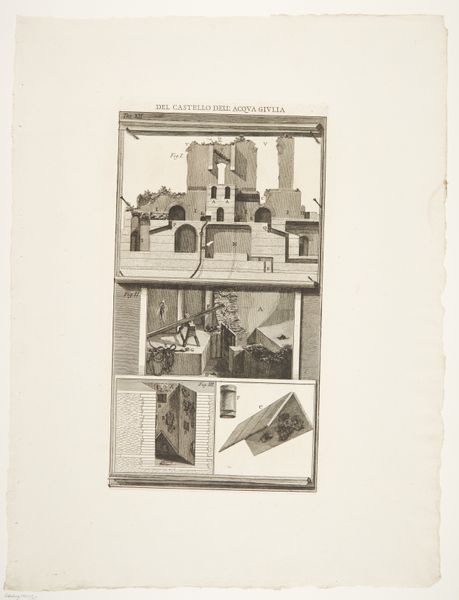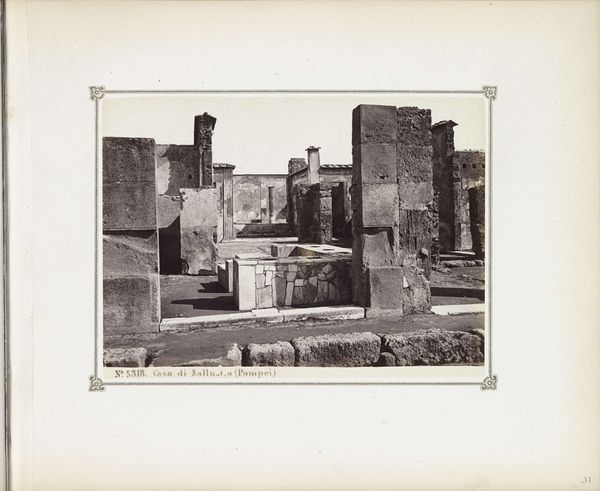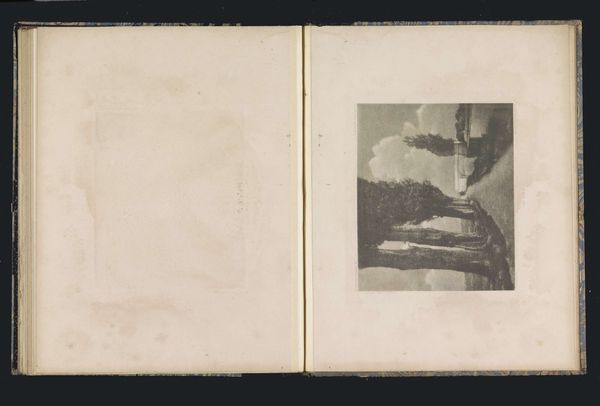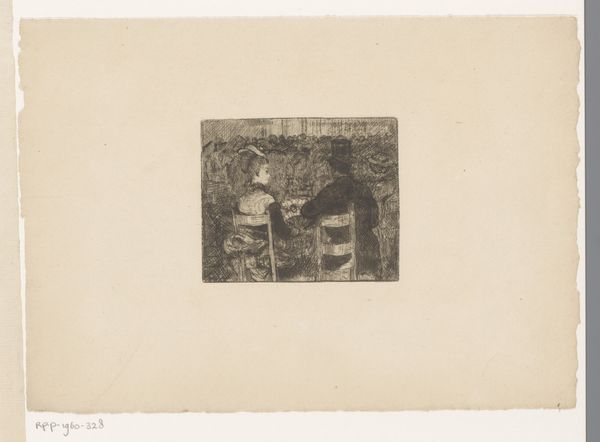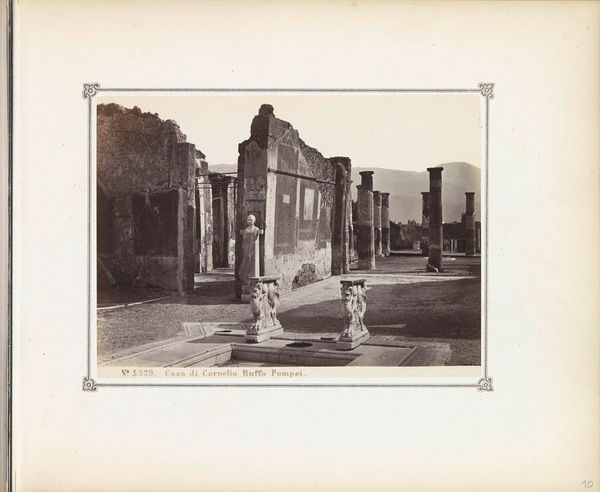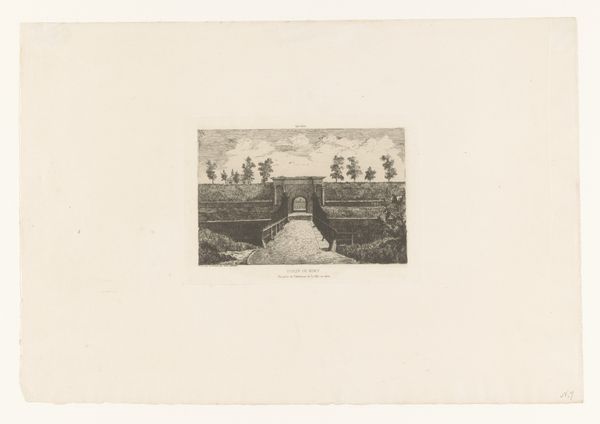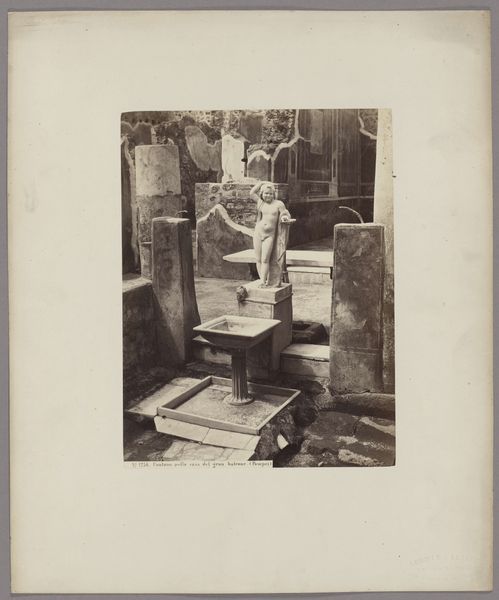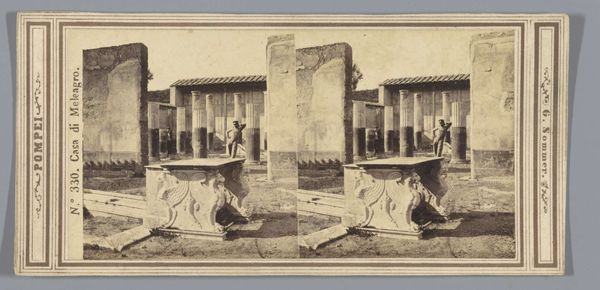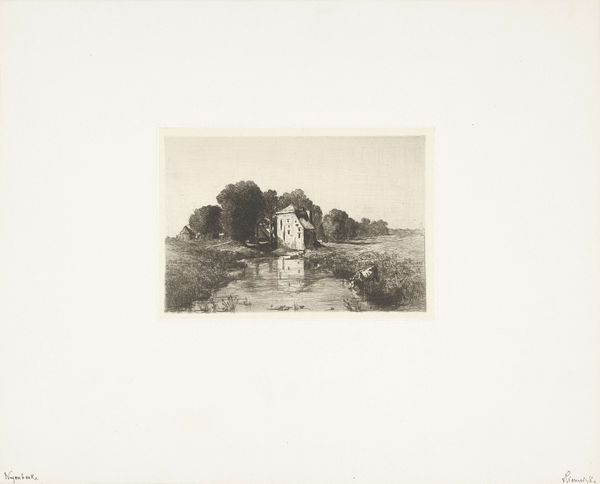
photography, gelatin-silver-print
#
landscape
#
photography
#
ancient-mediterranean
#
gelatin-silver-print
#
realism
Dimensions: height 103 mm, width 139 mm
Copyright: Rijks Museum: Open Domain
Curator: Let's look now at Giorgio Sommer's photograph, "Restanten van het Huis van Meleagro in Pompeï," a gelatin silver print from circa 1860-1900, found here at the Rijksmuseum. Editor: There's such a melancholic mood immediately. It's like looking at ghosts suspended in time, rendered even starker by the monochrome. Curator: Precisely! Sommer was keenly aware of the emerging archaeological fervor, the desire to document the past. We're seeing not just the remnants of a grand Roman home but a careful capture of the materiality of the ruins: the fluted columns, the decaying plaster, and that sculptural table base in the foreground. Think of the labor involved in creating such a space and, equally, the process of excavating and then photographing it. Editor: And that table base! Those winged lion-like figures evoke a protective, almost guardian energy, don't they? Meleager himself was a mythological hero, tied to themes of bravery and fate. The placement in the ruin creates a strong juxtaposition; they're meant to ward off danger or evil. What dangers could remain, after centuries and an erupting volcano? Curator: A poignant thought. These photographs of Pompeii were often purchased as souvenirs, emblems of travel and reminders of mortality, becoming commodities of both knowledge and sentimental value. Imagine the chemical processes, the developing solutions used in that darkroom—bringing this ancient space into being for a Victorian viewer. Editor: The photograph seems to understand its role as a vehicle for memory, too. Look how the details draw you back: the worn texture of the columns, promising life long after their abandonment and subsequent ruin. A statement about civilization and decline. Curator: Absolutely, a meditation on cyclical patterns and enduring craftsmanship, recorded through meticulous and reproducible methods. Editor: And I can’t shake how Sommer's framing subtly insists on cycles. From its elaborate carvings to the decaying structures behind, Sommer presents it all with clear emotional understanding. Curator: Sommer certainly invites us to consider what endures. What survives destruction, and what meanings can these unearthed artifacts carry for generations to come?
Comments
No comments
Be the first to comment and join the conversation on the ultimate creative platform.
